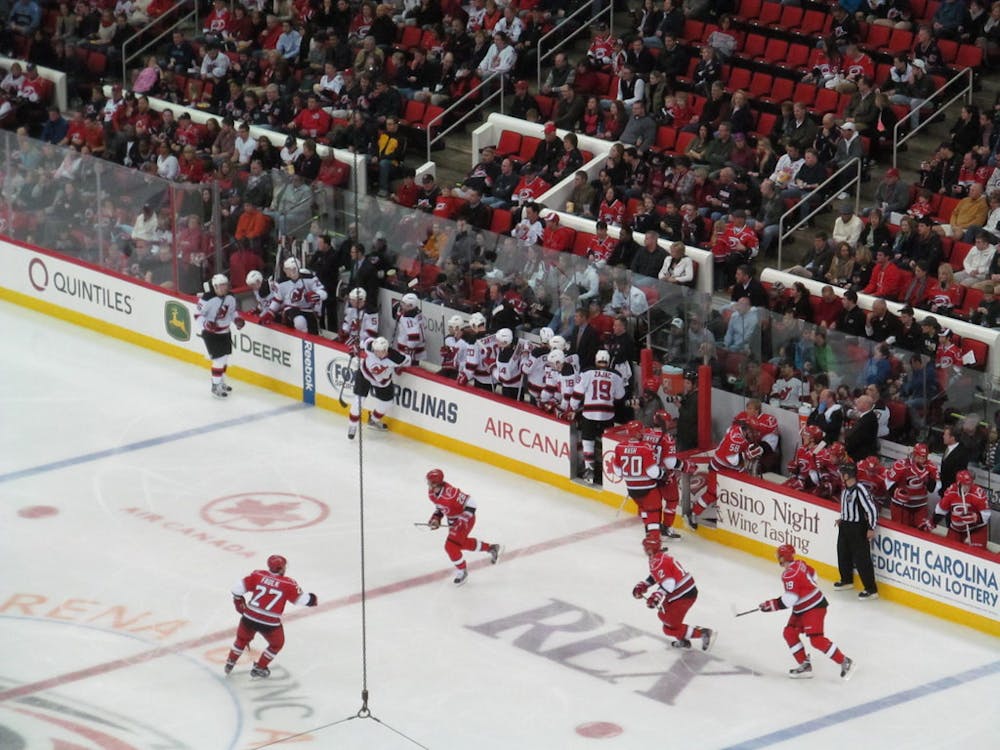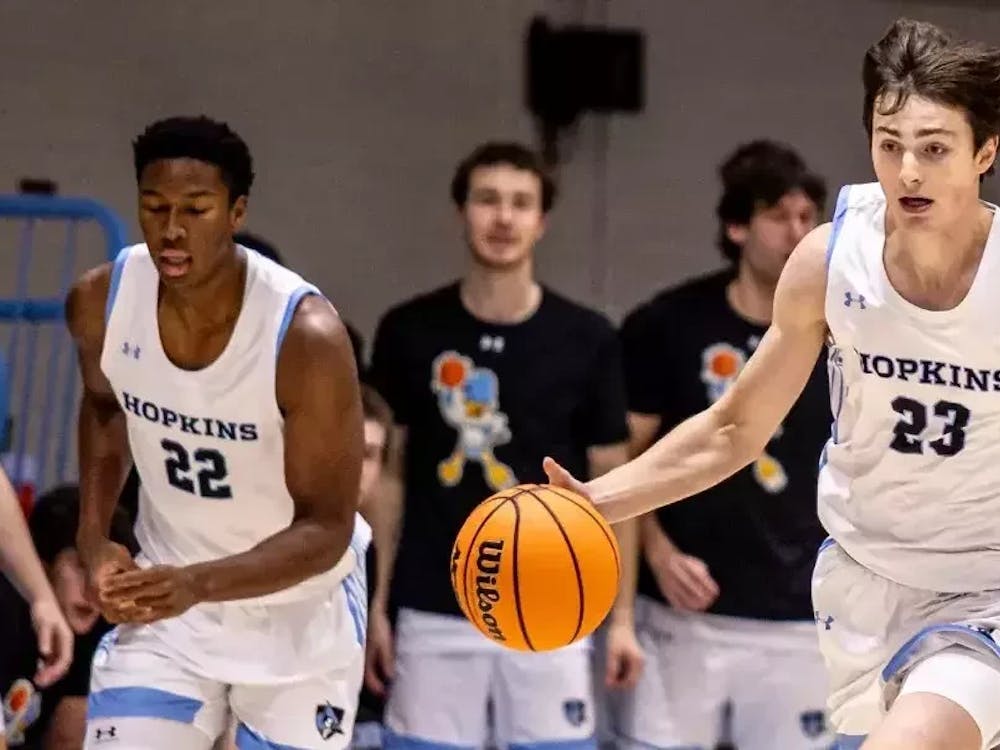
20 wins in just 25 games, featuring a 13-game win streak. The most points (41) of any team in the National Hockey League (NHL). Unquantifiable resilience and swagger. However it’s phrased, the New Jersey Devils are taking the league by storm, playing at a ridiculous (and almost certainly unsustainable) 134-point pace.
Hockey fans everywhere are asking the inevitable question: Are the New Jersey Devils for real?
Perhaps there’s one statistic that resoundingly answers the question: a +36 goal differential. It’s hard to call a team a fraud with a number that strong. Nearly every year goal differential is a phenomenal predictor of playoff teams.
Last year all but two teams with a positive goal differential made the playoffs while just one with a negative goal differential (the Dallas Stars) snuck in. Ditto for the year before, where every team with a positive goal differential made it and the St. Louis Blues were the only negative goal differential team to sneak in. The same applied the first full year pre-COVID, with the Montreal Canadiens being the only team with a positive goal differential to miss the playoffs.
New Jersey could lose 16 games in a row by the average loss margin of 2.2 goals and still maintain a positive goal differential for the season. Their playoff odds anecdotally look good.
But let’s dig deeper than any one statistic, even if it’s an assertively good one.
One of the most interesting points about New Jersey is that analytics enthusiasts have been jumping on the Devils' bandwagon for years. Last year with average goaltending, the underlying numbers say this team might have been a playoff team. It was a doppelganger-like flashback to the Carolina Hurricanes before they emerged as a perennial powerhouse and playoff team. That team pushed analysts to the limit, wondering if such a sparkling team by every expected stat could truly be so sustainably inept at finishing high-end chances and having goaltenders that couldn’t stop a beach ball.
Last year New Jersey very much looked the part of this curious past Hurricanes team. New Jersey used seven goaltenders over the course of the season. Their goaltending was so bad that even Gritty was waiting for a call to audition. According to Money Puck, players Nico Daws and Mackenzie Blackwood, who combined to play 50 of the team’s games, together allowed 20 more goals than an average goalie would have been expected to allow.
Over the course of the season, New Jersey goaltenders surrendered 54 more goals than they would have been expected to if they had just average goaltending. That means New Jersey goaltending cost the team nearly two-thirds of a goal per game. Imagine playing for a team where two out of every three nights you were basically losing by a goal from the get-go. New Jersey finished last year with 27 wins, 46 losses and a goal differential of –59. With average goaltending, they would have been close to being a positive goal-differential team and could potentially have snuck into the playoffs.
When trying to explain why the Devils have gone from being last year’s fifth-worst team in hockey to the best team in the league at the time of writing, goaltending is a very logical place to start. Vitek Vanecek, the Devils' new primary netminder, has looked like one of the better goalies in the league, sitting at 11 wins and just two losses behind a 91.8% save percentage and 2.24 goals allowed average.
Interestingly Vitek Vanecek has been great, but it would be overly zealous to declare his 16-game sample as proof that the Devils' goaltending woes are entirely a thing of the past. To be clear, Vanecek has been everything the Devils could have asked for and more, and he deserves credit for that. He’s been a revelation in net.
But we’re less than a year removed from him and Ilya Samsonov forming a subpar platoon that was arguably one of the biggest reasons the Capitals lost in the first round last year, clocking in with a negative goal saved above expected. And no matter how great he’s played, 16 games is still a very small sample.
There’s a reasonable question whether the bigger story should be Vanecek’s brilliance or the Devils' stingy defense. The four defensemen with the highest expected goals percentage in the NHL this year all play for the New Jersey Devils, with all having expected goals percentages ridiculously above 60 percent and quiet stalwart Jonas Siegenthaler sitting at number one with a historic 66 percent expected goals percentage. Siegenthaler and his partner Dougie Hamilton both also rank in the top ten in lowest expected goals allowed.
The Devils' defense is not giving up high quantities of quality chances. In short, their goaltender has been great, but they have also made life as easy as possible for their goaltender. Of note, Vanecek is still saving more goals than expected. There’s clearly a combination of both a defense and a goaltender playing extremely well.
The test will be to see if both the defense and Vanecek can keep up their high-level play even if both revert closer to their career norms. To be clear both are playing so well right now that regression to the mean is unlikely to change the playoff aspirations of such a strong team. But it will likely give us more information into just how great this team is on the scale from playoff team to bonafide Stanley Cup contender in the aftermath of the team’s impressive 13-game win streak.
Perhaps most amazing to me is how good the Devils could be in the coming years in the context of their amazing success right now. They are a young team with its core stars locked up long-term at reasonable prices and more on the way. How many teams are serious cup contenders with two potential future number-one defensemen in the system and likely just a year away from debuting?
It’s scary to think that this team has last year’s number two overall pick Simon Nemec and recent number four overall pick Luke Hughes in the pipeline. They already have potentially the best defense in hockey, and they could have two more dynamic, all-star-plus defensemen who will be further cornerstones in the years to come.
Imagine a team with young pillars Jack Hughes, Nico Hischier, Jesper Bratt, Luke Hughes, Šimon Nemec and Jonas Siegenthaler, along with intriguing young players Dawson Mercer and Alexander Holtz and veterans Dougie Hamilton, Ondřej Palát and John Marino. That’s a winning formula. All, except Bratt, are either signed or controlled by New Jersey for at least the next four years.
New Jersey has done the impossible, rising from the fifth-worst team to one of the best teams in the league in one offseason of time. Statistically, they are an undeniable favorite for the Microsoft Excel Cup and a serious contender for the real-life Stanley Cup. It may take a year or two of young players learning the flavor of the playoffs and the nuances differentiating regular season success from playoff success, but the Devils are for real. This team has all of the pieces, and there’s reason to believe it will be a perennial powerhouse in the years to come.





